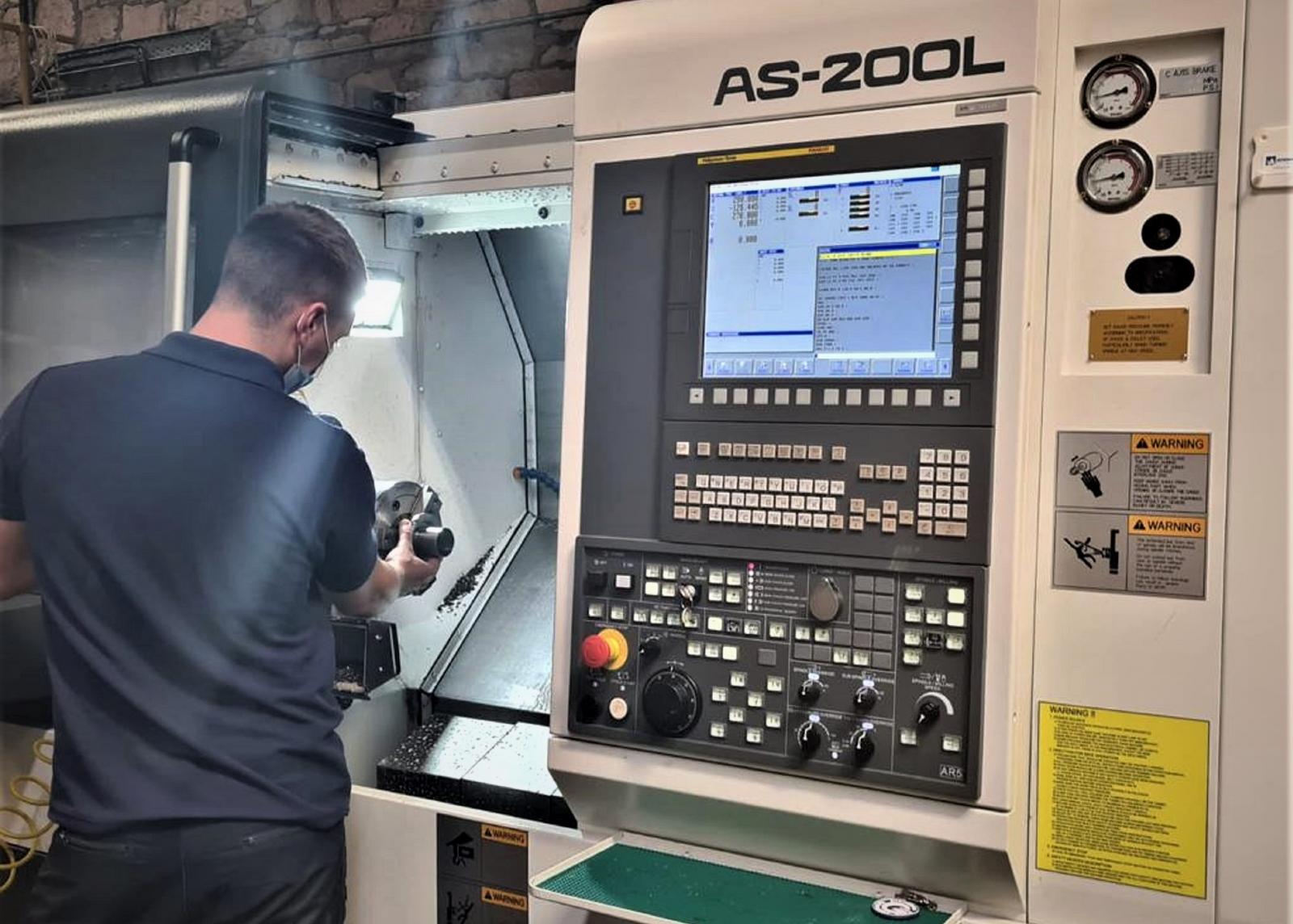
Fairbrother & Grimshaw has invested in one-hit turning to improve cycle times on a contract to turn stainless steel power generation components.
The 12 employee Lancashire company had won a long-term contract for 50-off stainless 316 components each month; and the challenging parts required three operations on a turning centre followed by 4th axis machining.
Fairbrother & Grimshaw recognised an opportunity to expedite the process with one-hit machining whilst also acknowledging that if its existing CNC turning centre had a break-down, completing the monthly order would be problematic.
The company therefore invested in a Nakamura-Tome AS200LMYSF twin-spindle configuration, long bed specification machine with milling capability Y-axis.
The machine provides a 90% increase in turning length over its previous machine. With a longer Z-axis travel and a Hydrafeed barfeed, the new addition supports the production of complete parts either via its 8-inch chucking capacity or 65mm automated barfeeding capacity.
Neil Grimshaw said: “The Nakamura is like having four machines in one. By using the Y-axis milling and the sub-spindle facility, our parts are coming off the machine in one-hit. The benefits are the drastic reduction of set-ups, the elimination of second-ops and an overall cycle time reduction of more than 50%
“The one-hit machining reduces the manual handling of parts, reduces human intervention and it improves the overall quality and consistency of a batch of parts. We have recently installed a new Axiom Too CMM and the parts coming off the Nakamura are not only high quality with excellent surface finishes, but the dimensions are consistent with zero deviation.”
The company has nine CNC machining centres and four CNC turning centres, so the new Nakamura-Tome AS200LMYSF is bridging the gap between the two departments, permitting more milling work to be completed in a single operation in the turning department.
This is gradually increasing capacity in the milling department as fewer parts require secondary milling operations.
Neil Grimshaw said: “Whilst we primarily bought the machine for the power generation part, we are witnessing similar savings on other legacy work we are transferring to the Nakamura. For example, we have a regular 1000-off series run of washers for the rail industry that was previously two operations. By transferring this to the Nakamura, we are machining the parts in one-hit, alleviating milling work from our 4th axis Quaser (machining cenre) and reducing our cycle times by more than 30%.
“Furthermore, with the barfeed facility, we can run the Nakamura unmanned until the batch is completed – saving on labour costs.”
“Likewise, we have a die component for the food industry that is required in volumes of less than 100-off and the two turning operations and three milling operations are now a single operation on the Nakamura.”